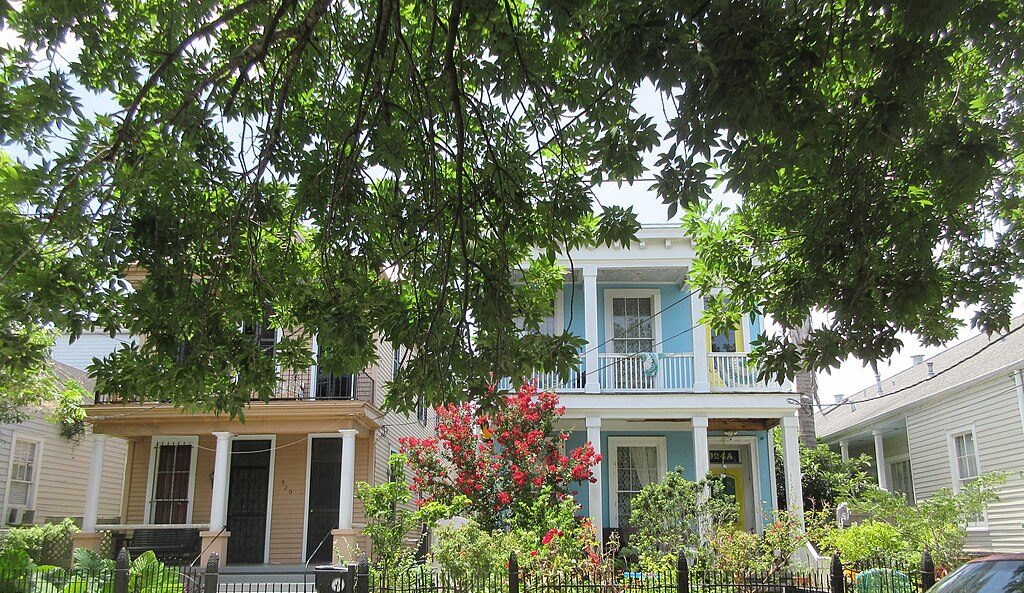The Irish Channel is a diverse neighborhood filled with a charming array of residences that boast the beauty and bright colors of New Orleans architecture. Established as the riverfront of the City of Lafayette in the 1830s, the Irish Channel blossomed into a busy area of wharves surrounded by lumberyards and cotton presses. Humbler buildings pushed out grand early residences as the waterfront became increasingly busy, although you can still find a mansion or two among the charming rows of smaller frame homes. Construction of the New Basin Canal brought an influx of immigrants to the region; many of them settled this neighborhood in the 1830s, and the great Irish Potato Famine of the 1840s brought even more. Residents were mostly working-class Irish, Germans, Italians, Americans and Free People of Color during the mid-19th century.
The neighborhood has significant ties to the development of jazz. “The area gains its significance in music from the fact that many jazz musicians of German, French, Irish and Italian descent were born and reared here,” according to the National Register’s listing of the Irish Channel as a Historic District in 1976. “All the members of the Original Dixieland Jazz Band, the first jazz band to make a phonographic record and the first to go to Europe, were from the Irish Channel. They were…jazz immortals who helped spread jazz throughout the world.”
The Irish Channel has been the center of the city’s St. Patrick’s Day celebration since 1809. Marchers parade between oaks while riders toss cabbages, carrots, potatoes and onions into the crowd — all the ingredients revelers need to make a stew. After the parade, people linger all day in the neighborhood’s bars, which have always been a part of life here, in good times and bad.
The Irish Channel was hit hard after World War II when FHA-insured mortgages were basically restricted to the new suburbs. Vast urban sections of American cities were quietly redlined, destined to decay. “Twenty thousand men went to war from the Irish Channel, but when the war ended, they couldn’t get the financing to move back in,” a property assessor once told preservation activist Camille Strachan. In the 1970s, young do-it-yourself renovators rediscovered the neighborhood, but the oil crash of the ‘80s ended that short boom. Neighborhood revitalization picked back up again in the 1990s, thanks to determined residents and organizations like the Preservation Resource Center, which helped find homebuyers for blighted structures and assisted low-income and elderly homeowners with much-needed repairs in the area. Today, the Irish Channel is a desirable place to live and a fun place to relax with numerous restaurants and retail along Magazine Street.



